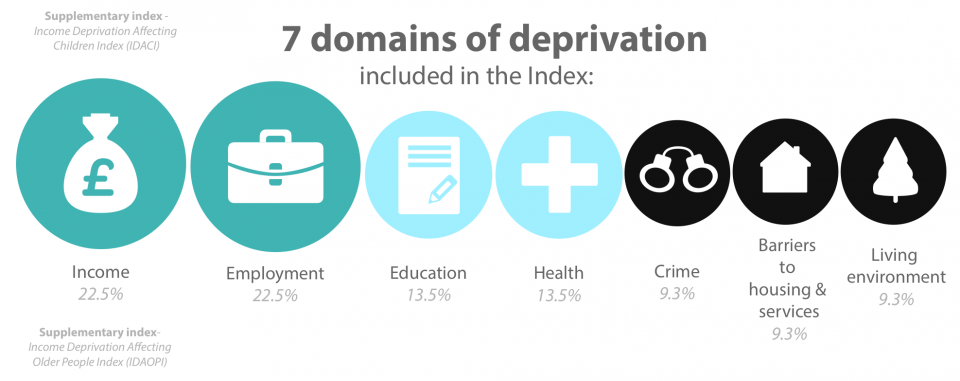Measures of personal deprivation and geochemistry are gaining interest from different sectors. This can be in relation to where a person lives, access to green space (parks and gardens) and the population density of a region. We carry out research that includes soil contamination and dust from soil as markers of potential deprivation and, in particular, crime.

Does high population density have an effect on deprivation? © Peter Hall/Unsplash.

Does easy access to green spaces have an effect on deprivation? © Gary Butterfield/Unsplash.
For one case study we investigated the spatial relationships between chemical land quality and deprivation indicators in Glasgow, where generalised linear modelling of respiratory cases showed significant associations with overall soil metal concentration (Morrison et al., 2013).
More recently, we used total soil element concentrations (lead, selenium and cerium) in UK urban centres with three socio-economic factors associated with personal deprivation, population density and environmental deprivation to model crime deprivation (Cave et al., 2018).

The English indices of deprivation: income, rmployment, education, health, crime, barriers to housing services and living environment. © UK Statistics Authority.
Cave, M R, Wragg, J, and Lister, R. 2018. The effect of lead in soil on crime deprivation in Derby, Leicester and Nottingham. Applied Geochemistry, Vol. 88 Part B, 198–212.
Morrison, S, Fordyce, F M, and Scott, E M. 2013. An initial assessment of spatial relationships between respiratory cases, soil metal content, air quality and deprivation indicators in Glasgow, Scotland, UK: relevance to the environmental justice agenda. Environmental Geochemistry and Health, Vol. 36(2), 319–332.
Relative topics
You may also be interested in

Measuring geochemical hazards
Understanding and assessing geochemical hazards in the environment has been a part of the BGS portfolio of research for over 50 years.



